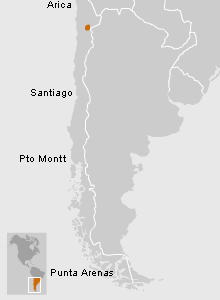The Ciénaga culture developed in what is now the northwest Argentinean province of Catamarca, although it reached as far as the Calchaquí Valley in the north to the northern edge of San Juan Province in the south. Much of this territory consists of broad valleys and steep canyons. It boasts a warm, dry climate, with vegetation consisting mainly of scrubland and cactuses, as well as trees such as mesquite and chañar, which were an important source of resources for this culture.
How to Arrive
El Museo se encuentra ubicado en pleno centro de Santiago, en la esquina de las calles Bandera y Compañía, a una cuadra de la Plaza de Armas.
Tickets
Chileans and resident foreigners: $1,000 Foreigners: $8,000 Chilean students and resident foreigners: $500 Foreign students: $4,000
Guided Visit
El Museo cuenta con un servicio de guías, sin costo adicional, para los establecimientos educacionales.
Information for Teachers
Invitamos especialmente a coordinarse con alguno de nuestros guías para programar una visita o actividades de motivación y seguimiento que aprovechen de la mejor forma la experiencia de visitarnos.
Audioguides
Download recordings of the Permanent Exhibition display texts in English, French, Portuguese and Spanish here. These audioguides are in mp3 format and are arranged by cultural area, following the same order as our exhibit galleries. Descargue desde esta página audioguías en castellano, inglés, francés y portugués con los textos de las vitrinas de la […]






































